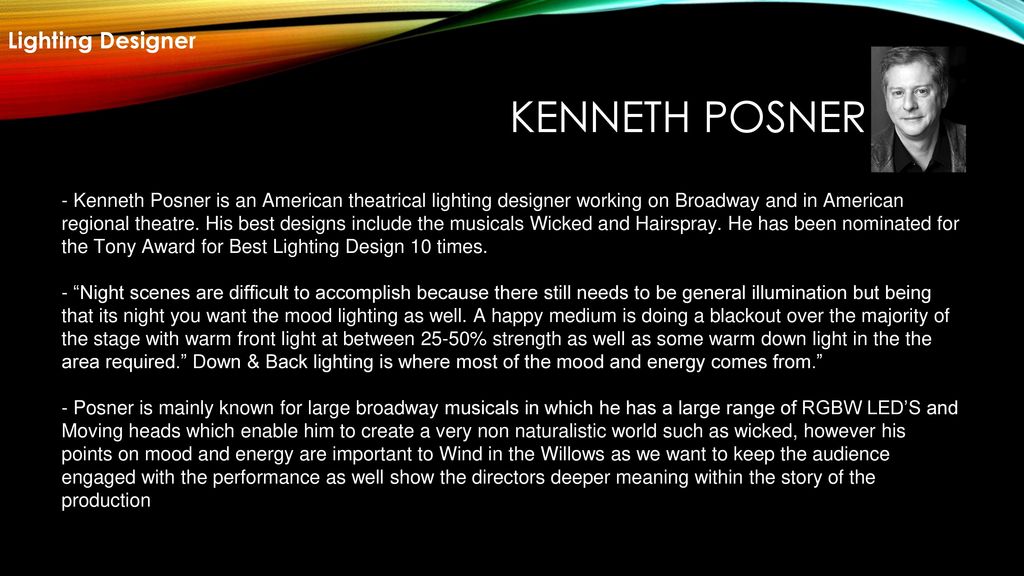
- #STAGE LIGHTING DESIGN FRONT TOP AND BACK SKIN#
- #STAGE LIGHTING DESIGN FRONT TOP AND BACK PROFESSIONAL#
It’s just one of the variables that Frank Gatto & Associates, Inc. Even with make-up, imperfections and flaws are more obvious on darker skin.
#STAGE LIGHTING DESIGN FRONT TOP AND BACK SKIN#
An element that many individuals don’t account for is skin texture. The color of the garments an individual is wearing also affects how a studio or venue will be lighted. Those disparities become even more pronounced when shooting under certain conditions. The different colors also create different levels of shading and shadowing and poor lighting choices will make an individual appear an entirely different shade than their actual skin tone. Lighter skin colors tend to reflect light, while darker colors tend to absorb it. Lighting specialists must “paint” all the actors or subjects with light that shows them to their best advantage.

2nd releases the curtain goes the floor for the unveiling.Just as certain make-up is used for different skin tones and colors, lighting professionals face many of the same challenges when providing illumination for TV, film and theatre performances, along with weddings, special events and corporate engagements. The double Kabuki have two process which begins hidden curtain above, 1st dropping in in front or around subject counselling it. The single Kabuki drop consists of either a hidden curtain dropping in in front or around subject, or a curtain dropping to the floor so to reveal the subject. Kabuki curtain ( Drop curtain ) is a special effect used in theatre and special events in which a lightweight fabric or banner is dropped quickly from above to reveal or conceal a product, space, or performers. Raising all the vertical lift lines gives a scalloped bottom edge adjusting the lift in some lines gives a more elaborate opening. Looks like a simple pleated curtain when closed and offers a choice of lifts. Raised evenly by multiple vertical lift lines between each pleat, they are usually made from ornate fabrics to give a luxurious grand opera house look. These opulent curtains have vertical and horizontal fullness sewn into the pleated swags. Heavier curtains may need motorised rigging. This curtain is pleated or gathered with swags produced by sewing rings on the back of each curtain diagonally from the lower on-stage edge to the upper off-stage edge.Ī cable or line threaded through the ring lifts the curtains open. It has 50-100% fullness and is generally manufactured in velvet when used as a front curtain. It comprises two sections suspended from a track, which open and close from the centre to off-stage. The traveller or bi-parting curtain is the most commonly used style. There are many types of theatre curtains here are the four most popular: Overlap, Traverse or Traveller And don’t worry if you can’t see what you want – just give us a call to discuss your needs. Then browse our swatches library to select your fabrics. The more information we have, the easier it is to recommend exactly the right type, durability, weight and drop of curtain, together with the right fixing and mechanism.Ĭlick on the ‘Styles’ button above and take a look at the line drawings to help you decide which type of curtain is best suited for your space. Our experienced team will discuss your ideas and advise you on what’s achievable and appropriate for your space and project.


#STAGE LIGHTING DESIGN FRONT TOP AND BACK PROFESSIONAL#
We understand all the elements needed for safe and professional operation whether we’re installing traditional theatre curtains or drapes for our non-theatrical clients. We supply only the very highest quality curtain fabrics from manufacturers we trust with a long and proven history in the industry.īut our knowledge goes beyond stage and theatre curtain supply and installation. And we have every type of curtain for every type of space, as well as the equipment needed to operate them.


 0 kommentar(er)
0 kommentar(er)
